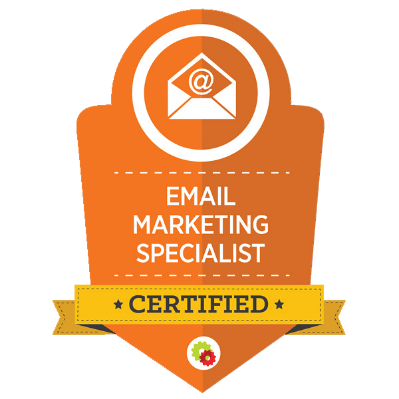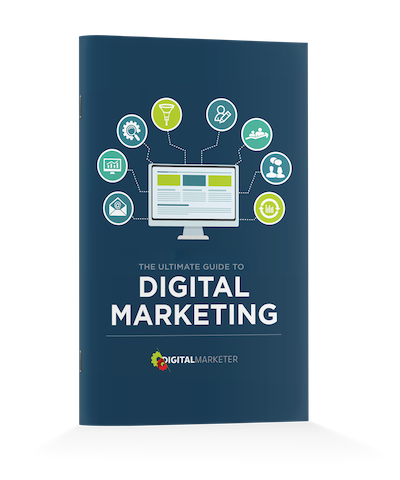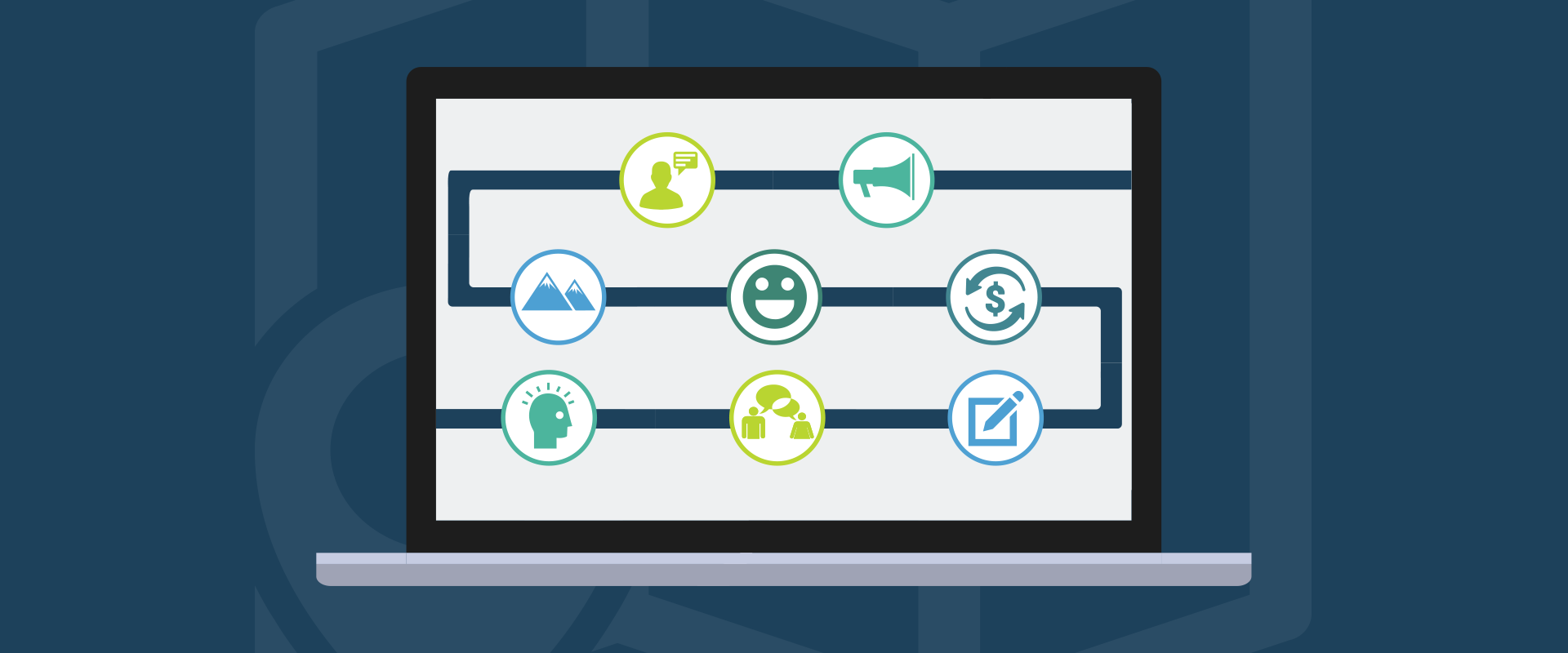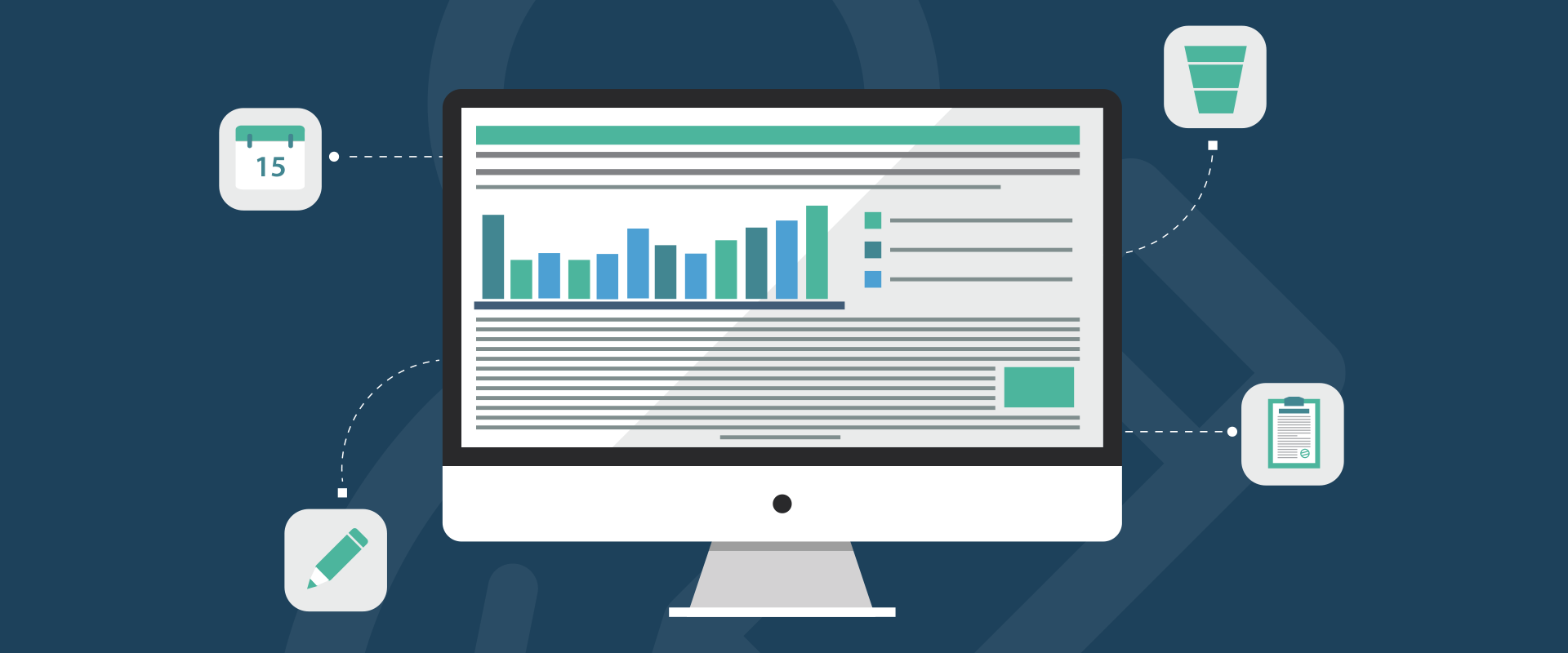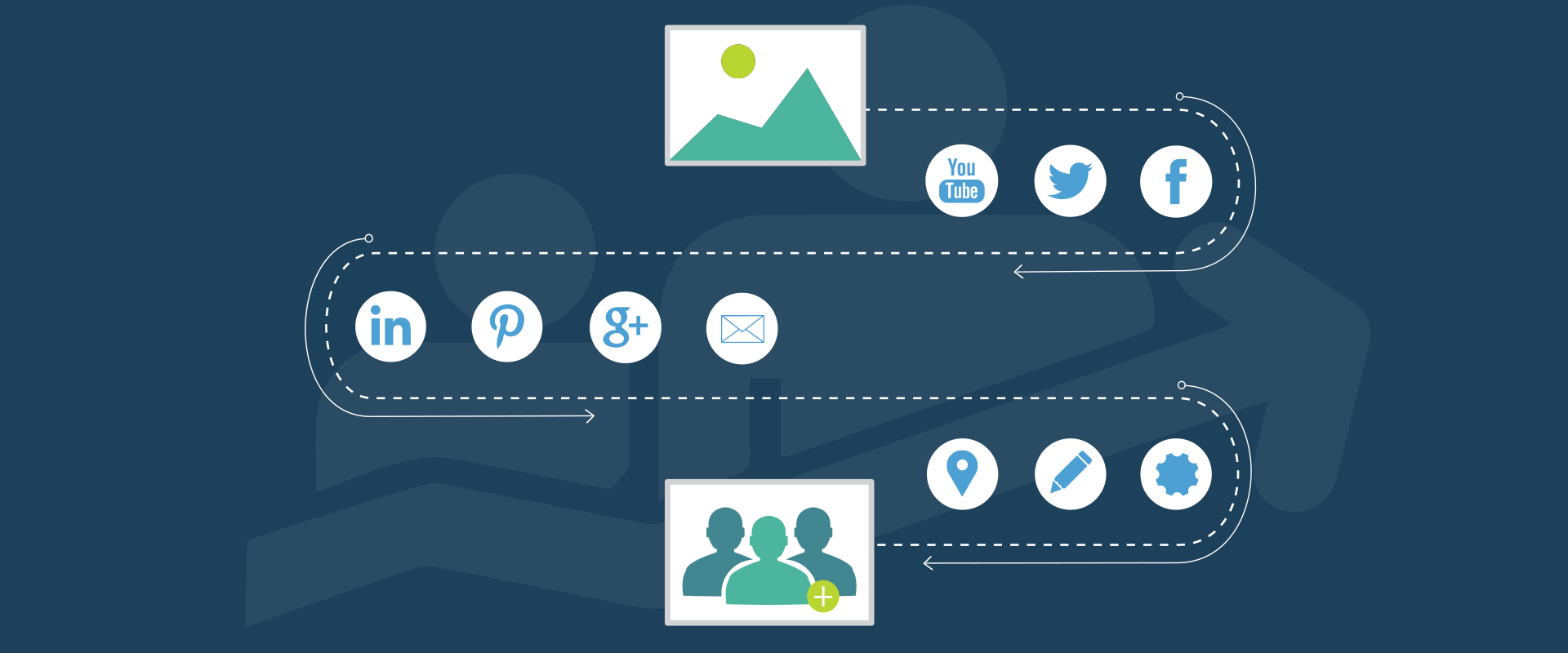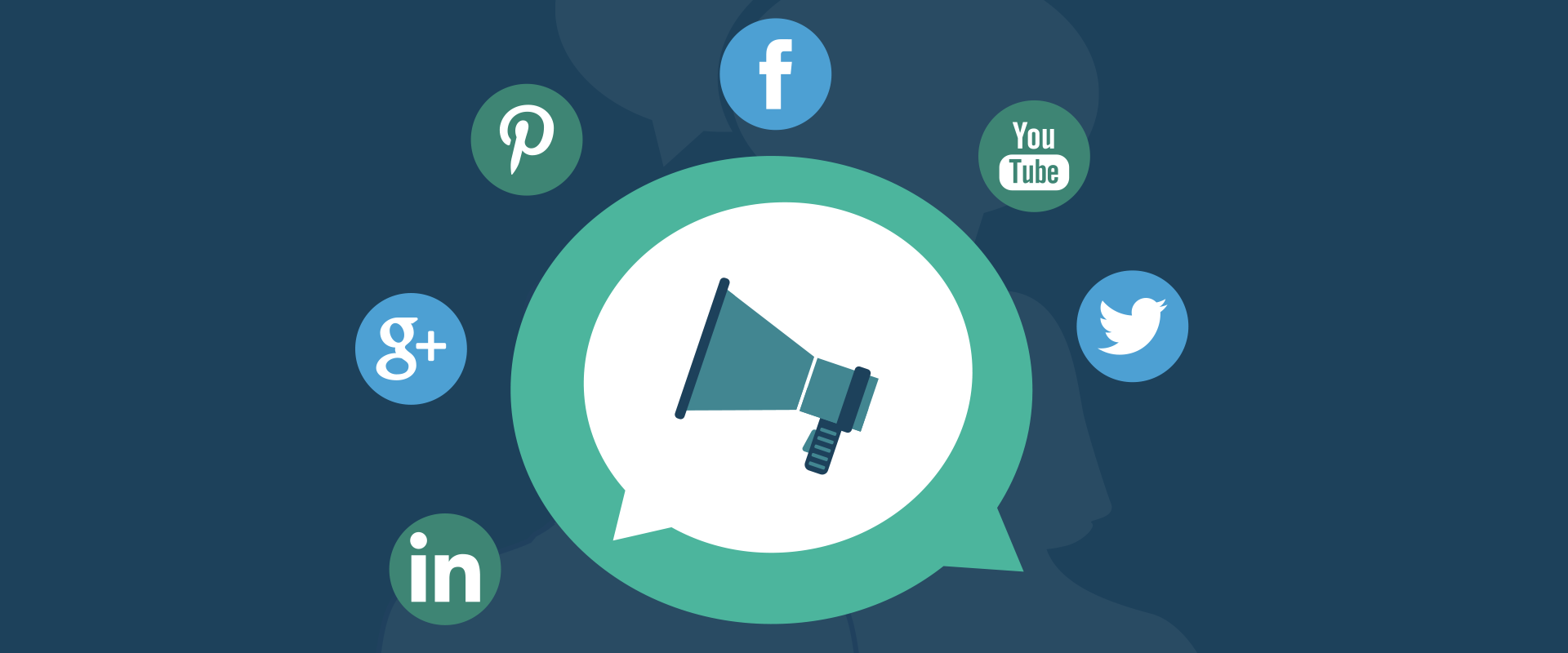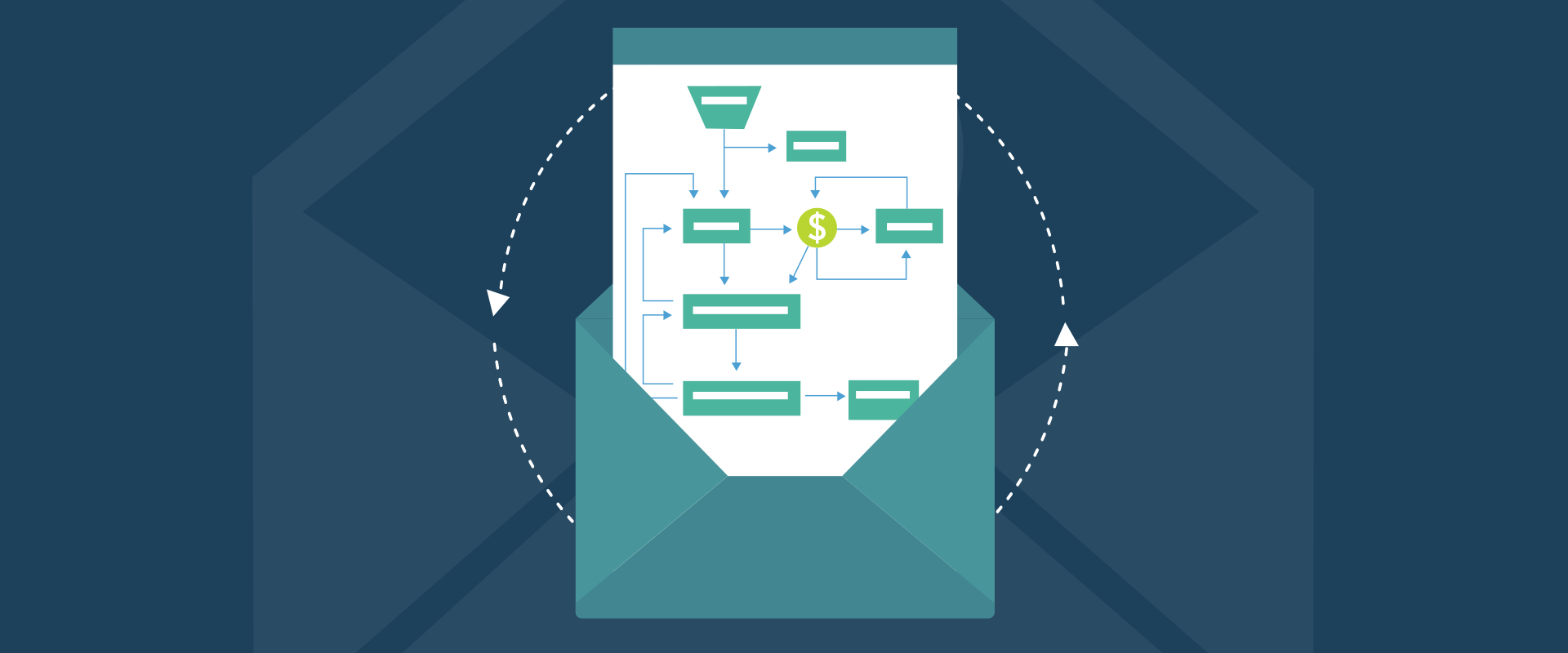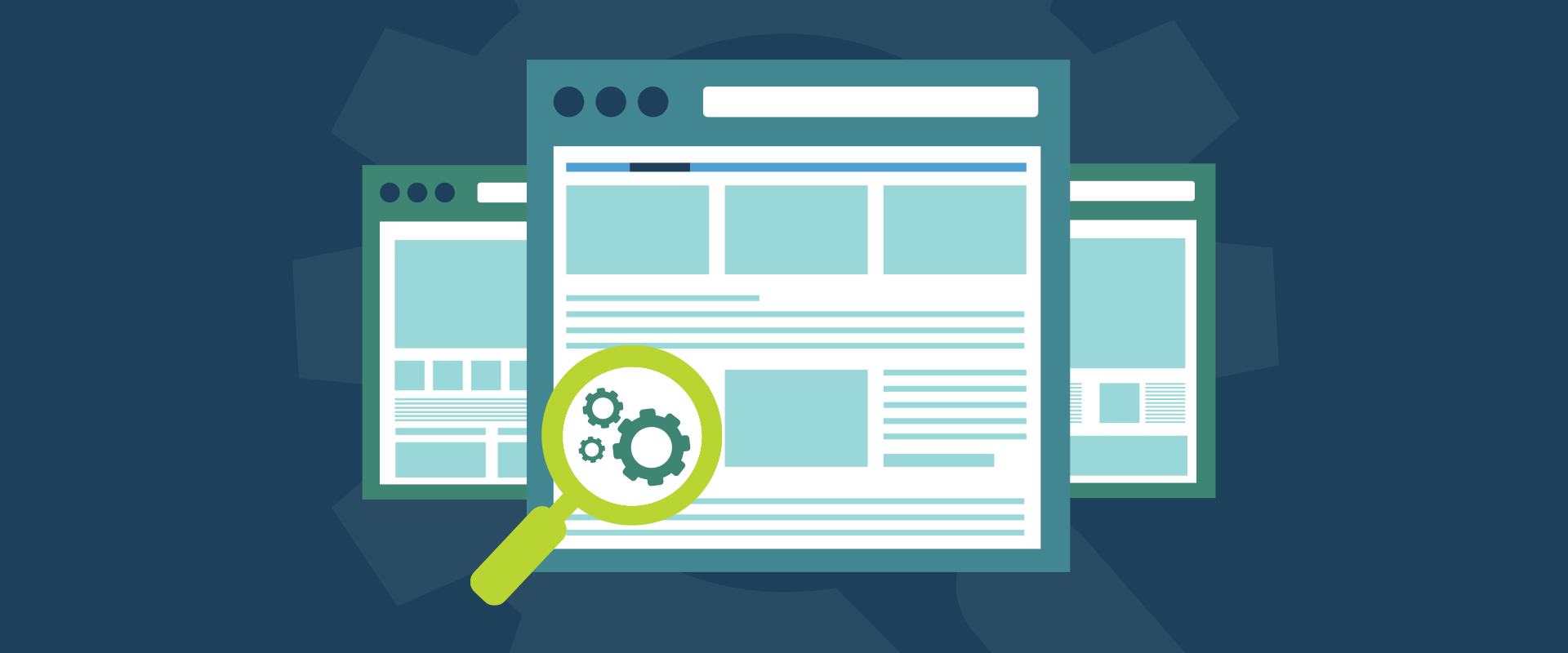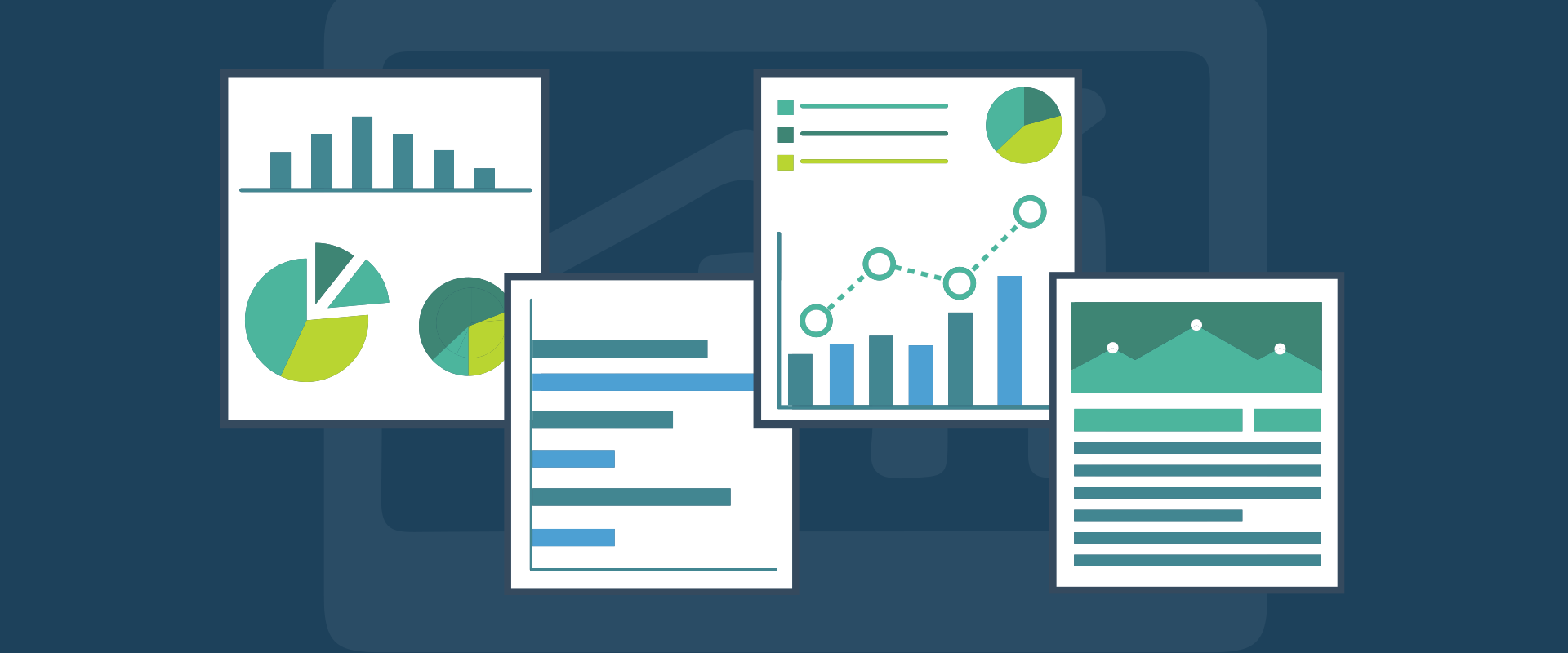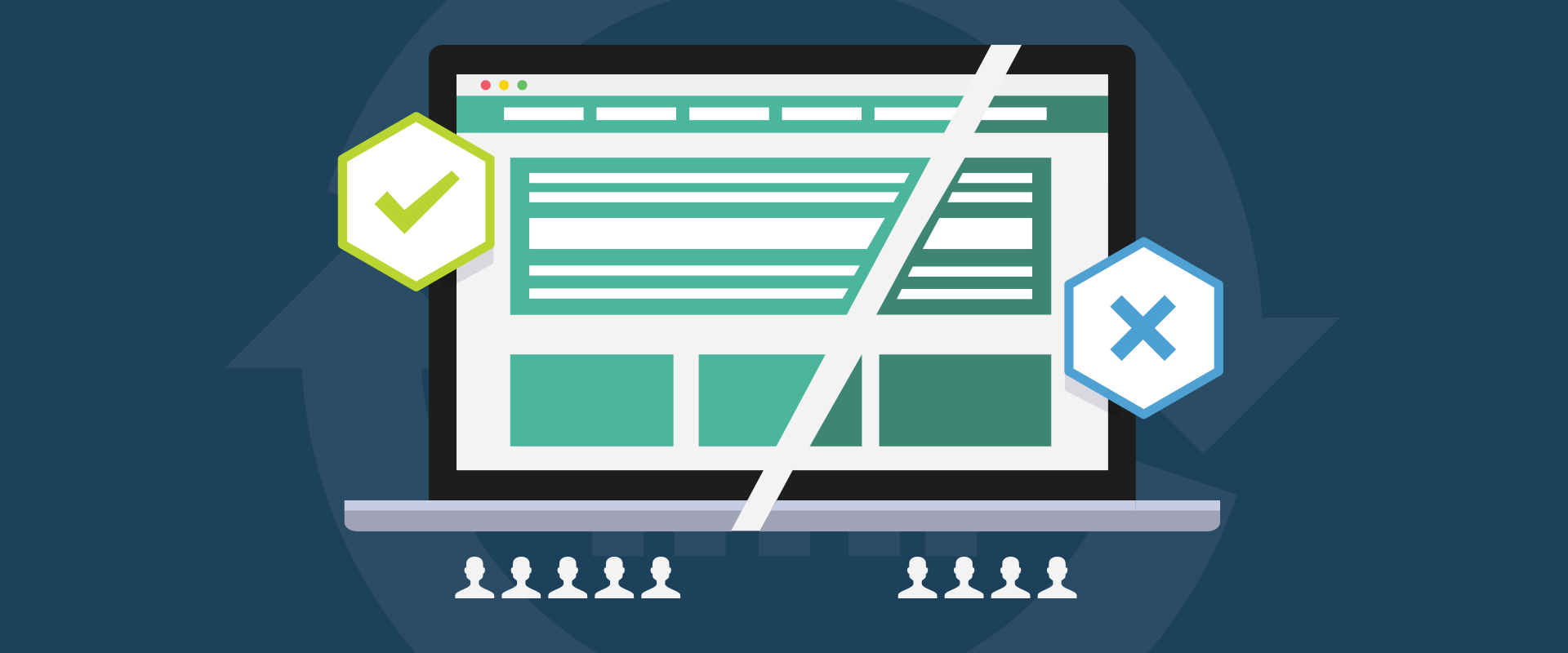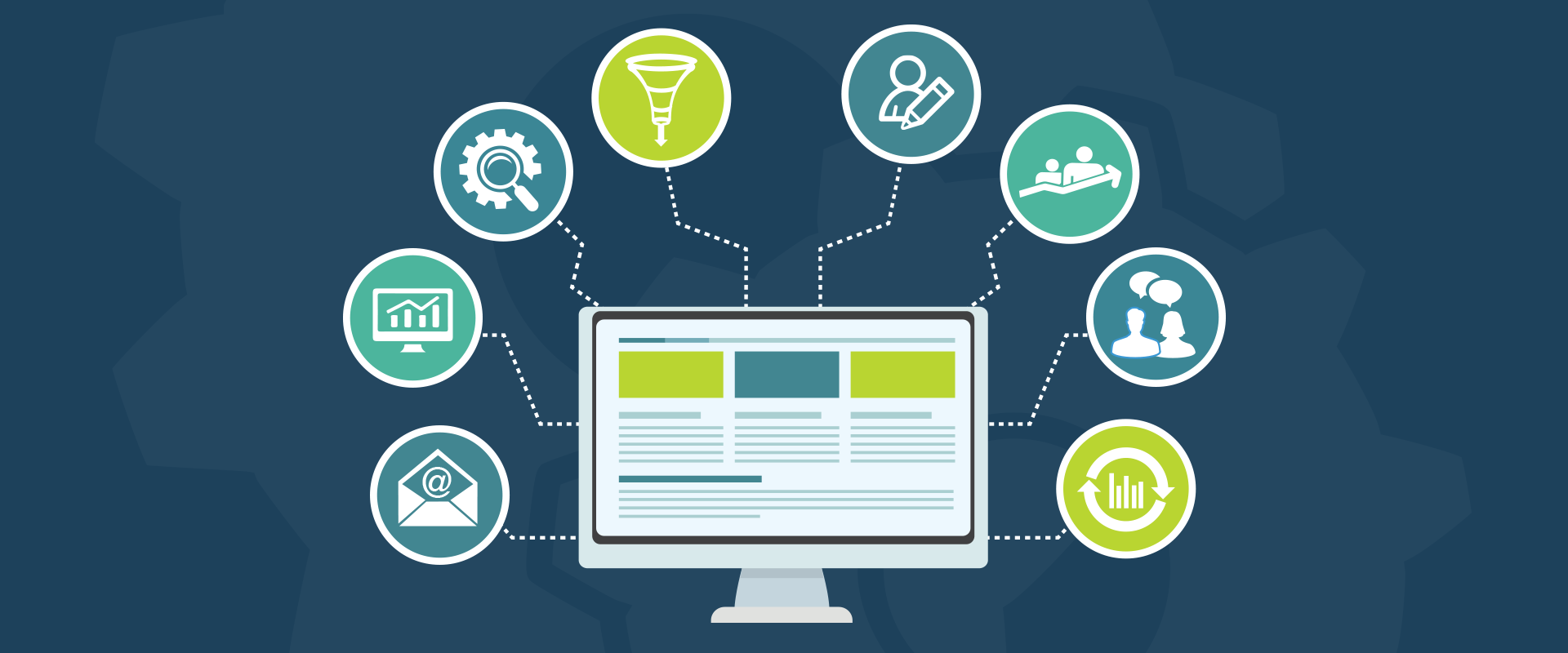CHAPTER
05
Following Email Marketing Best Practices
After reading the last chapter, we're confident you understand that we live in a social world.
Your own experience probably backs that up. Every day, you chat in real-time with people all over the world.
Does that spell the end of email marketing?
As social media has grown in importance, many so-called marketing experts have predicted the end of email.
Don't believe them! Email marketing is alive and well.
And here’s why we say that with the utmost confidence:
- Traffic and Conversion Summit launched in 2009 with 258 attendees. Email marketing was a big part of the launch strategy.
- Using email marketing to promote the event, T&C grew to 4,500 attendees in just 8 years.
- In only one year, DigitalMarketer generated well over $20 million in revenue from email marketing alone.
Regardless of the rumors, email is nowhere near "dead"—and if you know how to use it, it will help you exponentially grow your business.
With that in mind, in this chapter, we'll review the basics of email marketing, including the methods, the metrics, the lingo you need to know, and who on your team should own email marketing.
But first, let’s look at the role email plays in a growing business.
The Role of Email Marketing

Email marketing can be used for branding, engagement, acquisition, retention, direct sales, reactivation, generating traffic, and getting referrals, making it one of the most versatile tools any business can use to grow their business.
But it’s important to understand why we use email marketing. Interestingly, it’s not for profit or growth.
The outcome of strategic email marketing is indeed profit and growth, but the purpose of email marketing is to move your customers from one stage of the "value journey" to the next.
The goal of email is to assist and expedite a customer’s movement from one stage of the value journey to the next.
We talked about the "Customer Value Journey" in Chapter 1. But let's review it again.
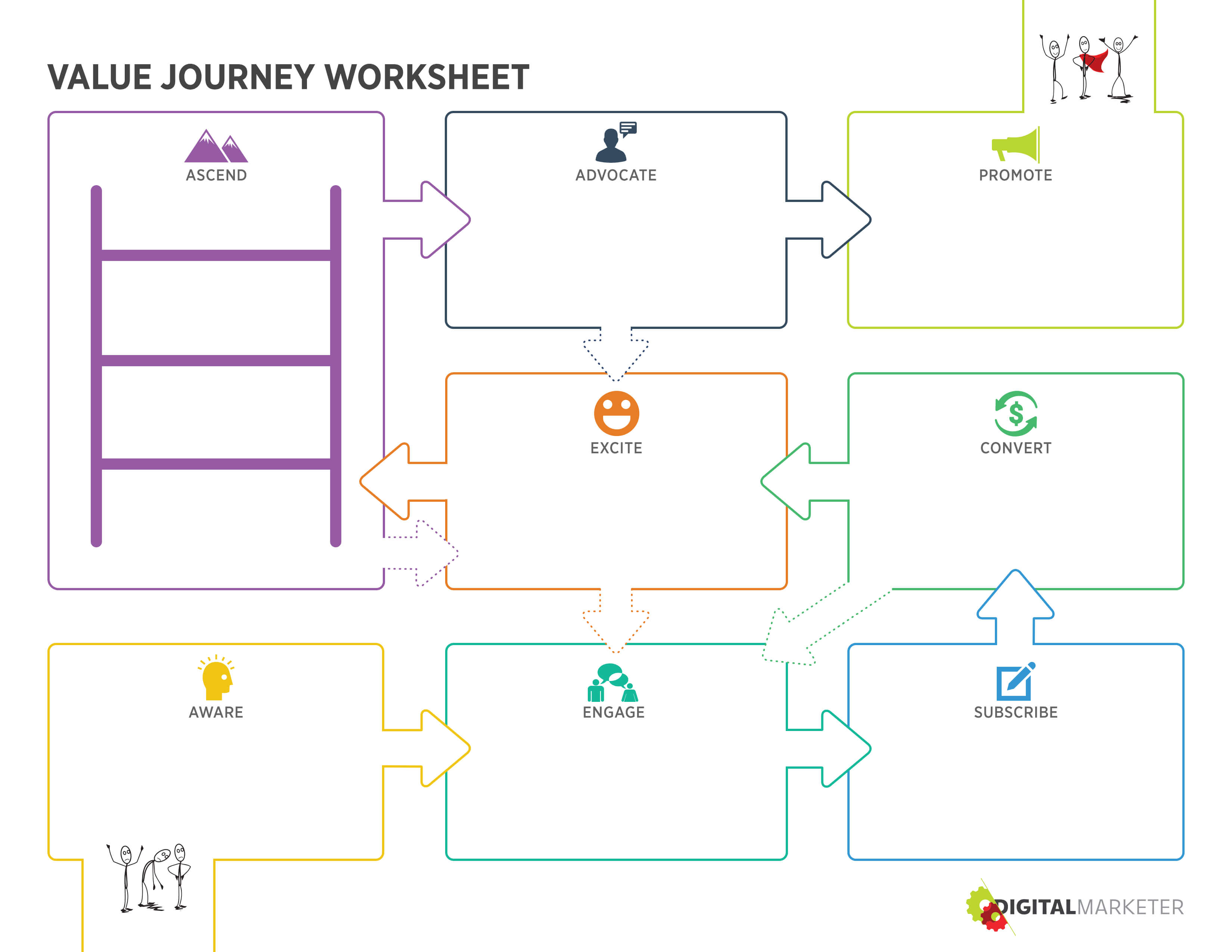
This is your business. Think of it as a path your customers will travel as they get to know you.
In the bottom left corner, they’re only just becoming aware of you, but by the time they reach the top right corner, not only do they know you, they promote you to everyone they know because you’ve transformed their life.
This journey, from awareness to conversion to promotion, is the customer journey. As the customer travels this path, their lifetime value increases as well, adding profits and stability to your business. That’s why we also call this the value journey.
And it’s through email that you expedite the journey—if you understand the methods that work.
Methods of Well-Executed Email Marketing
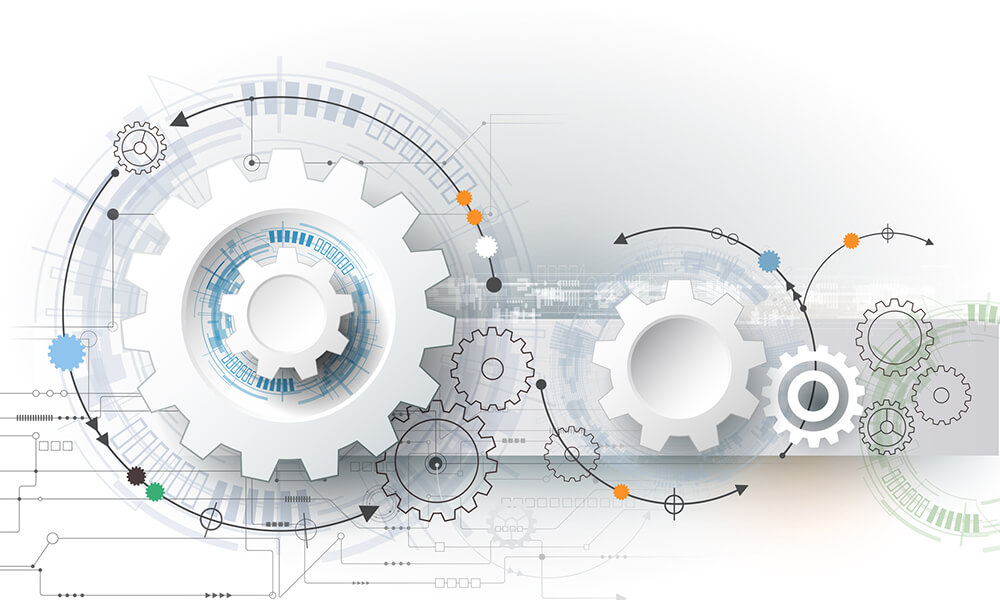
Email marketing is more than broadcasting an email every time you publish a new blog post. And it’s more than sending email alerts when you have a promotion or sale.
To master email marketing, you need to understand the types of emails you’ll use, their timing, and the different campaigns you’ll use to connect with your subscribers.
The Types of Emails You’ll Use in Email Marketing
There are three types of emails that you’ll rely on as an email marketer.
- Transactional – to provide customer service.
- Relational – to engage subscribers and nurture relationship with them.
- Promotional – for generating sales.
As you can see in the chart below, each type facilitates a different interaction with your subscribers.

You'll use 3 different types of emails to engage with your subscribers.
Email Type #1: Transactional Emails
These are the emails that get sent out by your automated systems, confirming actions taken by your prospects and customers.
While most transactional emails are templates provided by the marketing systems we use, the average revenue per transactional email is 2x to 5x higher than standard bulk email.
Here are the 8 types of transactional emails you can use, along with some tips for raising their transactional value:
1. Order Confirmations
Order confirmation emails have a higher open rate than any other type of email. That makes sense if you think about it: the recipient has just given you money and wants to verify the details of their purchase.
Most brands don’t do anything to optimize this email for growth. But look at what Amazon does.

Yes, emails can (and should) be optimized for growth.
This email confirms the purchase, sets expectations, and finishes the transaction. The customer is excited about their purchase—which means it’s a great time to add an additional offer or ask for a referral.
2. Purchase Receipts
Receipt emails, like confirmation emails, have a high open rate, but they’re rarely leveraged for growth.
See what I mean:

Confirmation emails have a high open rate.
In this example, the template provides space for a “contact us” message. Why not make an offer as well?
3. Shipping Notices
Another email that excites your customers is your shipping alert email, telling them their purchase has been shipped and when it will arrive.

Shipping alerts get customers excited about their purchase.
As you can see, there’s not usually anything in this email that could expedite the customer journey.
But you’ve just reminded your customer of their purchase, renewing their excitement about getting it in the mail. What could you add to leverage that excitement? Could you ask them to tell their friends? What about a social share?
4. Account Creation
This email goes out when you create an account for new purchases, providing customers their login information.

Think about how you can leverage transactional emails.
As with most transactional emails, this email is rarely leveraged. But getting access to a closed group is a bit like getting a present. Your customers are feeling excited and happy. Why not ask them to do something—say, to share their excitement with their friends in social media?
5. Return Confirmation
If you sell physical products and someone requests a return merchandise authorization (RMA), this is a fantastic time to make them an offer or give them a coupon. While they aren’t happy about the product they’re returning, they can get excited about your excellent customer service.
Your goal here is to re-engage customers, perhaps by offering a different product that would fit their needs better or by providing a coupon code.
For example, you might double the refund amount on another purchase. Or for a SaaS product, you could offer to provide whatever help is needed while lowering the price if they stay. Here’s an example of that approach:

Creatively addressing customer concerns can help you re-engage them.
6. Support Tickets
As with Return Confirmation emails, support ticket follow-up emails give you an opportunity to add tons of value. If someone received great support, you can easily ask them to share their experience or extend their happiness by giving them a coupon.
7. Password Reminders
Most password reminder emails contain little more than a link:

Typical password reminder email
Why not make an offer or announce an upcoming event?
8. Unsubscribe Confirmations
This email is a standard automated email. But what if you could figure out an offer that would be appropriate for these emails? How much growth would that add to your business? How much more movement would you get through that customer journey?
This is the thinking you need to develop to win at email marketing.
You see, with email, you don’t have to make big changes to see big movement. Small tweaks can have very big effects.
Think about the emails you already send. As you’ve seen, a lot of them are system-generated, which means they contain nothing more than generic messages.
- What could you do with these emails to move people through your customer journey?
- What could you do to transform subscribers into referral partners, ambassadors, or promoters of your brand?
Email Type #2: Relational Emails
Companies that use email to nurture leads generate 50% more sales-ready leads at 33% lower cost.
Here are 8 types of relational emails you can use to get these results for your own business—whether it’s digital or brick-and-mortar.
1. New Subscriber Welcome
This email should be sent immediately to every new contact. It introduces them to your brand and tells them what to expect, including the benefits of being on your list and the value you intend to provide.
Here’s an example that not only sets expectations but also adds value.

Welcome emails should set expectations and add value.
2. Gated Content Delivery
Gated content is valuable information that isn’t freely available online. To access the information, you must “pay” with either your email address or a social share. Typically, lead magnets and optin offers are free in exchange for the visitor’s email address.
This automated email delivers the content that was requested, successfully concluding that transaction. But as with transactional emails, there’s lots of room to creatively increase their value.
Notice that Bob Bly’s email (above) tells people how to access their gated content while selling the value of being a subscriber. This gets people excited about opening his emails and helps him retain subscribers long-term.
3. Newsletters/Blog Articles
Whenever you create content, you should use email to distribute it to your subscribers. These emails can be short and simple, introducing your topic and providing a link to access it.

Use email to distribute new blog articles to your subscribers.
4. Webinar/Event Confirmation
This type of email is both relational and transactional. You’ve asked someone to block off some time to put you into their schedule. They’ve made a commitment to you. You need to confirm that commitment.
That’s the transactional side of things. You need to send them a confirmation email that spells out the date and time of your webinar, plus any other pertinent information.
But you also want these emails to be relational—because people prioritize time they’ve set aside for their friends.
Here’s a good example from one of our webinars. Notice that we review the information that will be shared in the event, so attendees’ interest will stay high.

A relational webinar confirmation email
As with gated content, webinar or event confirmations give you the chance to prove that you can be trusted to deliver what you promise. If you develop a reputation for following through on free transactions, it’s easy to believe you’ll be trustworthy in paid transactions as well.
The next 4 types of relational email are used less often, but they can still help you engage with subscribers and move them through the customer journey. They are:
5. Survey/Review
Surveys can help you learn more about your customers’ interests. It can also help you segment them so your offers will be precisely targeted to their needs.
6. Social Update
Update your followers on changes in your company or your product. This can help you build excitement as well as preparing them for what’s coming up.
7. Contest Announcement
Contests build excitement and attract new subscribers. Your current email subscribers should be the first to hear the news, though. After all, they’re probably your most avid fans.
8. Referral Request
After any positive interaction with your subscribers, it makes sense to ask for a referral. Think new purchase, resolution of a problem, or just a friendly email with a kind word.
Relational emails, regardless of why they’re being sent, should be "human" rather than scripted. And they should always provide value. Remember to spell out the next steps and encourage people to take those steps right away.
Email Type #3: Promotional Emails
According to the Direct Marketing Association, 66% of consumers have made a purchase online as a direct result of an email marketing message. Obviously, promotional emails are a powerful growth tool.
So let’s talk about the 8 types of promotional emails you should be sending, including examples from the DigitalMarketer archives.
1. Promotional Content
Promotional content is content that’s perceived as valuable to your audience while it generates sales for you. This type of content shouldn’t be overused, but balanced with relational content, it’s a good way to engage your subscribers.
You can see this dual purpose in action in the example below.

Promotional content is valuable while generating sales.
The value to the recipient is a free template, but its goal is to promote the Summit.
2. New Gated Content
Gated content aims to attract new subscribers, but existing subscribers are likely to want it as well. Why not send it to your email list to get them re-engaged and move them along the customer journey?
This example has the subject line, “[CHECKLIST] Get up to 20% better email deliverability,” which is sure to get noticed. Make sure your subject line is just as compelling.

New gated content, sent to your subscribers, can get them re-engaged.
3. A Sale Announcement
Sale announcements get more engagement than any other type of email. Clearly, if you want to make a bunch of sales, have a sale.
But you need to use a subject line that’s guaranteed to get noticed.
Like this one: [Flash Sale] 7 PROVEN Blog Post Templates (85% off)

Sales announcements get a lot of engagement, provided the subject line is good.
4. New Product Release
Your goal as an email marketer is to take new subscribers all the way through the value journey, transforming them into promoters.
Why?
Because promoters are hyper-responsive and typically want everything you produce. That being the case, you should always be producing new products to support these "hyper-buyers."
Then, make sure they know about it by creating a series of announcement/promotion emails like this one, announcing DigitalMarketer’s all-new Content & Commerce event in 2016.

Always produce new content to support hyper-buyers.
In the same way, use these last 4 types of promotional emails to let your subscribers and hyper-buyers know what you’re doing to solve their problems.
5. Webinar Announcements
6. Event Announcements
7. Trial Offers
8. Upgrade Offers
Now let’s talk about the difference between broadcast and triggered emails.
When to Send Each Type of Email (And to Whom)
Email service providers allow you to send emails in one of two ways:
- Broadcast emails are sent manually to your entire list or a segment of your list. They work well for promotions and content emails.
- Autoresponders are set up in advance to be delivered when someone performs a triggering action. Most of your email marketing (barring promotions and content emails) should be automated.
Keep in mind, though: Just because you CAN trigger a message, doesn’t mean you SHOULD!
By segmenting and automating your emails, you’re able to send messages that are highly relevant to your subscribers’ interests and priorities. That’s a win for you and your subscribers.
But just as you can under-automate, you can also over-automate, creating long, complex campaigns that keep your subscribers stuck in a particular phase of their value journey.
The goal, remember is to expedite people’s customer journey. And the more emails you create for each stage of their journey, the greater the odds that you’ll entrench them in that stage, slowing their overall journey.
Triggering That Works
Here are the 8 triggers that are most common in email automation.
1. New Subscriber
When someone subscribes, you want to automate their welcome and indoctrination to create a great first impression.
2. Lead Magnet Request
Most new subscribers will join your list when they opt in to get a lead magnet. Automating delivery ensures they get it within minutes of their request.
Be aware, a new subscriber will likely trigger two automations: subscriber welcome and lead magnet delivery—both. That’s okay.
3. Event Registration
If someone registers for an event, set up a confirmation email that gives them the details they’ll need, including date, time, and any access information.
4. Purchase
Similarly, if someone makes a purchase, they want confirmation that their order went through. A purchase receipt does just that.
Be aware, though, if they’re not currently a subscriber, their purchase may trigger a subscriber welcome automation as well. That's okay.
5. Clicking a Link in a Segmentation Campaign
Segmenting allows you to customize your emails to each subscriber’s interests. Their behavior—clicking a link in an email, for example—can be used to trigger an engagement campaign. This way, people who don’t care about the topic won’t see the campaign. But everyone who cares, not only sees your content, they see your promotion as well.
6. Excitement About Your Brand
Referral requests can be automated to follow up purchases and other behaviors that indicate they’re engaged and excited about your brand.
7. Cart Abandonment
One of the easiest ways to increase customer value is to move people off the fence just prior to a purchase. When someone adds products to their cart but doesn’t complete the transaction, that should trigger a reminder email.
8. Not Engaging with Your Emails
Re-engagement is how you reactivate subscribers who have stopped engaging with your emails.
Each of these triggers should set off an automated email campaign designed to follow up the triggering behavior and encourage people to take the next step in their customer journey.
Understanding Email Timing
You want your subscribers to be excited about getting your emails, and you want to train them open and engage with them.
There are two approaches you’ll need to take to make that happen: segmentation and timing emails to coincide with the customer journey.
Segmentation allows you to send emails to the people who will be most likely to respond favorably. No one sees a promotion they aren’t interested in, and people feel like their emails are tailor-made for them.
Timing is about understanding where your subscribers are in their customer journey and only sending them emails that are appropriate for that phase.
The 5 Phases of Email Marketing

When you understand the phases of the customer journey, it’s easier to send the right message at the right time. So let’s talk about the 5 phases of email marketing and the stages of the customer journey they align with.
1. The Indoctrination Campaign
Definition: A triggered campaign sent immediately after someone subscribes to introduce them to your brand and set expectations.
Stage of customer journey: Subscribe
Use this campaign to:
- Welcome new subscribers.
- Tell them what they can expect.
- Tell them what they need to do next to get the biggest benefit from you and your brand.
This campaign is sent to new subscribers to establish your authority, help them understand the value you’re going to provide, and get them excited about you and your brand.
If you do a good job of indoctrinating them, they’ll begin to recognize your name in their inbox, and they’ll engage with the content you send them.
Storyboard It
Step 1: Start by welcoming new subscribers and introducing them to your brand.
Step 2: Re-state in 3-4 bullet points the benefits they’ll get as a subscriber. (This is important. If you can’t articulate the benefits of subscribing, how do you expect them to understand the benefits of buying from you?)
Step 3: Tell them what to expect, using this framework: here’s what we’re going to do; here’s what you need to do after we’ve done it.
For example:
- Two to three times a week we’re going to send you brand new content and strategies on digital marketing. [Here’s what we do.]
- When you get that email, read it and save it—because when you’re looking for a strategy that works, you’re going to want to be able to access this information. [Here’s what you need to do after we’ve done it.]
Step 4: Encourage whitelisting by saying something along these lines:
- The information we provide—even the free information—is very important, and if you’re not getting it, you’re losing out. So here’s what I want you to do:
-
- Whitelist this email address. [Include a link to instructions.]
- Create a folder where you can save all our messages.
- Don’t auto archive any of them. (Read them and use them to grow your business!)
Step 5: Put your best foot forward. Send them a "best of" campaign, listing the content your existing subscribers have engaged with the most. For example:
- Your highest shared content, whether it’s video or a blog post
- Your highest commented Facebook post or Facebook Live
- A piece of content that has gotten rave reviews
Think of your indoctrination emails as a first date with your new subscriber. Show up in your best clothes, tell your best stories, and focus on building relationship with your new subscribers.
2. The Engagement Campaign
Definition: An interest-based, triggered campaign sent after your subscriber takes a specific action that makes a relevant offer (and sale) to your subscriber.
Stage of customer journey: Convert & Excite
Use this campaign to:
- Turn subscribers into buyers by prescribing the next logical step based on what you know they’re currently interested in.
This campaign targets subscribers who have just engaged with your brand. For instance, maybe they visited a page or downloaded a lead magnet, but they didn’t take the next action you presented.
The goal of this campaign is to engage with the subscriber, reference the positive action they’ve taken with you, and tell them the next logical action that will end in a purchase.
Storyboard It
Step 1: Acknowledge the action they just took.
Step 2: Try to overcome the objections you know they’re experiencing. Don’t just talk about the tactical, lever-pulling features. Address the thoughts and feelings that keep them from taking action.
Step 3: Prescribe the next logical step. Clearly spell it out.
Step 4: Ask them to buy.
Email marketing is about building relationships with your followers, sure. But you need to set expectations from the beginning of that relationship. Since, ultimately, you want your followers to become customers, you need to confidently ask for the buy.
3. The Ascension Campaign
Definition: An interest-based, triggered campaign that makes a relevant offer (and sale) to your subscriber immediately following their triggering behavior.
Stage of customer journey: Excite & Ascend
Use this campaign to:
- Expedite and accelerate the value journey.
- Turn new buyers into multi-buyers by prescribing the next logical step (or nurturing them until it’s appropriate to take that step).
Like the engagement campaign, this campaign is triggered by a subscriber’s action—generally a purchase—and presents the next logical step with your brand.
In many cases, it fills the gaps in your funnel, improving your results.
You see, each additional offer is a stopping point where customers might decline and exit your funnel. This sequence is designed to follow up that offer, provide extra incentives to buy, and overcome any objections for not buying.
Storyboard It
Step 1: Start by referencing the action they just took. (Don’t address the action they didn't take: "We noticed that you didn't buy our core product, so I’m sending you this email.") Congratulate them. Acknowledge their excitement. Build on that positive energy.
Step 2: Address and overcome the objections that might be keeping them from taking the next step.
Step 3: Clearly spell out the next logical step, so they know what they need to do.
Your goal is to turn one-time buyers into multi-buyers. To do that, you must articulate the value you’re providing, remind them of the benefits they’ll receive, and increase their interest and excitement.
But before you immediately start pushing a sale, ask yourself two important questions:
QUESTION #1: What is the next step I want them to take?
QUESTION #2: Do I have any reason to believe they are ready to take that next step?
These questions are important because (believe it or not) it can hurt to ask!
What do I mean by that?
Your offer must be appropriate for the stage of the relationship. If you move too fast or push too hard, you’ll make your subscribers uncomfortable, and they’ll leave.
If they’re not ready to take the next step in your value ladder, don’t ask. Nurture that subscriber until the time is right, and then make your offer.
4. The Segmentation Campaign
Definition: A manual promotional campaign sent to your entire database with the goal of segmenting your subscribers by interest.
Stage of customer journey: All
Use this campaign to:
- Pique the interest of subscribers who are "stuck" in their value journey.
- Get them to segment themselves based on what they’re interested in now.
This is one of the only email campaigns that isn’t automated and triggered by a subscriber’s behavior. Instead, you broadcast this promotion to your entire database (or a large segment of it) with the goal of segmenting your subscribers by interest.
You want your subscribers to raise their hands and say, "Yes, I’m interested in this topic." And when they've done that, you should have an engagement campaign set up to continue speaking to them about it.
The goal is this: to send more emails to the people who engage with your campaign and fewer emails to the people who don’t.
This approach may seem counterintuitive, but it works because it demonstrates that you’re listening. And from our experience:
- If you listen to what your subscribers are saying, they’ll give you more money.
- If you listen to what they want, they’ll engage with your brand more.
Ideas for Segmentation Campaigns
Idea 1: Use content to segment your list: blog posts, video, or gated content. Then, when someone engages with that content—indicating interest in the topic—send them an engagement campaign with promotional content based on that topic.
Idea 2: Use special offers: coupons, flash sales, or special promotions. High-value, time-sensitive offers give people a good reason to take immediate action, which can help you expedite their value journey.
Idea 3: Use events: webinars, demos, workshops, or even one-on-one phone calls. Time is money, as the saying goes. After investing the time to attend an event, people are more inclined to invest their dollars as well.
5. The Re-Engagement Campaign
Definition: A triggered campaign designed to re-engage any subscriber who hasn’t opened or clicked an email in the last 30 to 60 days.
Stage of customer journey: Any
Use this campaign to:
- Call out inactive subscribers and get them to start engaging with your emails again.
- Get them re-excited about you and your brand.
The reality is that not everyone will engage with your emails. Their interests or circumstances will change. And no matter where they are on the customer journey, they can become inactive.
What then?
You send a re-engagement campaign designed to re-capture their interest and get them opening and clicking your emails once again.
Storyboard It
Step 1: Identify your inactive subscribers—anyone who hasn’t clicked on an email in the previous 30 to 60 days.
Step 2: Give them a reason to re-engage with your emails. For example, you could take the direct approach, and ask if everything’s okay:
- I noticed you haven’t been opening or clicking my emails, and I just wanted to send an email and ask, "Is everything O.K.?"
Step 3: Remind them of the benefits of being a subscriber.
Step 4: Tell them what they’ve missed. As you would in an indoctrination campaign, send them some of your best content.
If this campaign works, you’ll have re-engaged your inactive subscribers and, hopefully, put them back on their value journey.
But what if it doesn’t work?
Simple. Stop email them.
Inactive subscribers raise your costs and hurt your deliverability. They’re also the ones most likely to complain when they see your emails in their inbox. So there’s no need to feel guilty. Clean your list on a regular basis.
Using These 5 Campaign Types to Expedite the Customer Journey
The 5 types of email campaigns we’ve just reviewed will help you engage your subscribers at every stage of their value journey. But it’s important to remember that your goal isn’t merely to engage people.
Email marketing is about quickly move your subscribers from one stage of the value journey to the next.
Typically, that journey begins when someone becomes aware of your brand and decides to subscribe. Once that happens, your job is to:
- Turn your new subscriber into a customer.
- Get them excited about the brand.
- Ascend them by getting them to buying more, higher-value products.
- Turn them into an advocate.
- Turn them into a promoter.
The 5 campaigns we've reviewed will help you achieve each of these goals—and quickly turn new subscribers into active promoters.
The Metrics: How Email Marketing Is Measured

Sending the right emails to the right people at the right time is only one aspect of email marketing. To optimize your efforts, you also need to measure your results.
Here are the top performance metrics that will help you manage your email marketing.
List Growth
For this metric, you want to watch the number of new subscribes as compared to the number of unsubscribes. As you might expect, you want the ratio to be positive.
Delivery Rate
The percent of messages delivered to the recipient’s inbox relative to the number of emails sent. Aim for a delivery rate of 95+ percent.
Open Rate
The percent of messages opened by the recipient relative to the number of emails sent.
Click-Through Rate (CTR)
The percent of email messages clicked relative to the number of emails sent or, in some cases, relative to the number of emails opened.
Unsubscribe Rate
The percent of emails that lead to an unsubscribe relative to the number of emails sent.
Complaint Rate
The percent of emails marked as Spam relative to the number of emails sent.
TIP: Your email delivery rate will go up if your open rate and click-through rates go up and unsubscribe rate goes down.
This is why we encourage segmented email campaigns that target people at their specific stage in the value journey. Our approach to email marketing is strategically designed to boost opens and click-through while minimizing unsubscribes.
The Lingo Email Marketers Use
What are the terms you need to know as an email marketer?
Customer Journey
Also known as the value journey. The development of a relationship with a prospect that takes them on a path from awareness of your business, products, and brand to rabid fan.
Broadcast Email
An email sent out to all email subscribers or a segment of your email subscriber list.
Triggered Email
An email sent automatically when a customer or prospect performs a specific action. For example, a relevant offer might be sent to someone who fills out a lead form.
Promotional Calendar
The 30-day and 90-day calendars containing the planned email campaigns that will intentionally move a prospect through the customer journey.
Email Storyboarding
The process of planning the structure, timing, and content of an email campaign.
Relevant Roles

Who in your organization should be trained in email marketing?
Three different departments should be proficient at and understand the role of email marketing.
Marketing
Every marketing professional should understand how email marketing can be leveraged to move prospects through the customer journey—especially your monetization team.
Sales
One of the most effective ways to create sales-ready conversations is to engage prospects through email.
Editorial
Your editorial team will use email to distribute the content they create and add value to subscribers on an on-going basis.
Bottom Line
Email marketing consistently generates the highest ROI of any marketing activity, but sadly most businesses are doing it wrong (or ignoring it completely).
Email is most effective when you coordinate it with your content and advertising campaigns—to indoctrinate your new subscribers, nurture those relationships, and move them quickly through the Customer Journey.
It may take you a while to master the tactics we discussed in this chapter, but the effort is well worth it. Email marketing will drive growth as no other strategy can.
The next step in mastering digital marketing is search marketing, and we'll cover that in the next chapter.
Become an Email Marketing Specialist
In this chapter, we’ve covered the basics, but you may still have questions. If so, let us know in the comments.
Or, for more in-depth answers, consider becoming a certified email marketer.
In our Email Mastery course, you’ll learn the three types of email campaigns, as well as HOW and WHEN to use them. You’ll also learn how to architect the perfect promotional calendar and how to use automated email marketing to literally "sell while you sleep."
By the time you finish, you’ll be able to effectively monetize any email list, while simultaneously increasing engagement with your subscribers.
